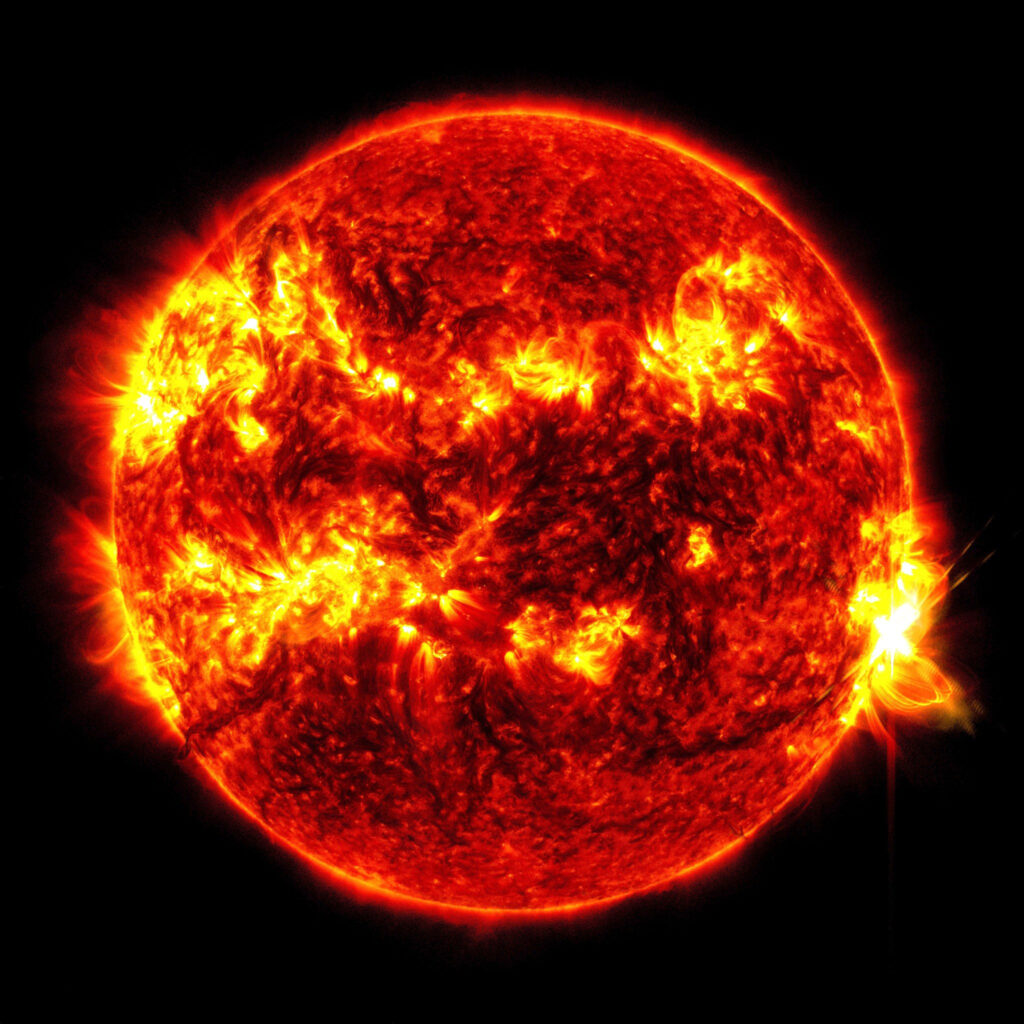The sun produced its biggest flare in nearly a decade Tuesday, just days after severe solar storms pummeled Earth and created dazzling northern lights in unaccustomed places. “Not done yet!” the National Oceanic and Atmospheric Administration announced in an update.
Quick Read
- Major Solar Flare Event: The sun emitted its largest solar flare in nearly a decade, an X8.7 class flare, as observed by NASA’s Solar Dynamics Observatory. This significant flare is part of the current 11-year solar cycle nearing its peak.
- Earth’s Safety: Despite the flare’s intensity, Earth is expected to remain safe this time. The flare occurred on a section of the sun moving away from our planet, reducing potential impacts.
- Recent Solar Activity: This flare follows a series of solar disturbances, including several flares and coronal mass ejections last week, which led to spectacular northern lights but also posed threats to power and communications systems on Earth and in space.
- Spacecraft and Astronaut Impacts: The recent solar activity affected space operations, with a NASA environmental satellite entering safe mode and astronauts on the International Space Station taking precautions against increased radiation.
The Associated Press has the story:
Sun shoots out biggest solar flare in nearly a decade, but Earth should be safe this time
Newslooks- CAPE CANAVERAL, Fla. (AP) —
The sun produced its biggest flare in nearly a decade Tuesday, just days after severe solar storms pummeled Earth and created dazzling northern lights in unaccustomed places.
“Not done yet!” the National Oceanic and Atmospheric Administration announced in an update.
It’s the biggest flare of this 11-year solar cycle, which is approaching its peak, according to NOAA. The good news is that Earth should be out of the line of fire this time because the flare erupted on a part of the sun moving away from Earth.
NASA’s Solar Dynamics Observatory captured the bright flash of the X-ray flare. It was the strongest since 2005, rated on the scale for these flares as X8.7.
Bryan Brasher at NOAA’s Space Weather Prediction Center in Boulder, Colorado said it may turn out to have been even stronger when scientists gather data from other sources.
It follows nearly a week of flares and mass ejections of coronal plasma that threatened to disrupt power and communications on Earth and in orbit.
NASA said the weekend geomagnetic storm caused one of its environmental satellites to rotate unexpectedly because of reduced altitude from the space weather, and go into a protective hibernation known as safe mode. And at the International Space Station, the seven astronauts were advised to stay in areas with strong radiation shielding. The crew was never in any danger, according to NASA.







